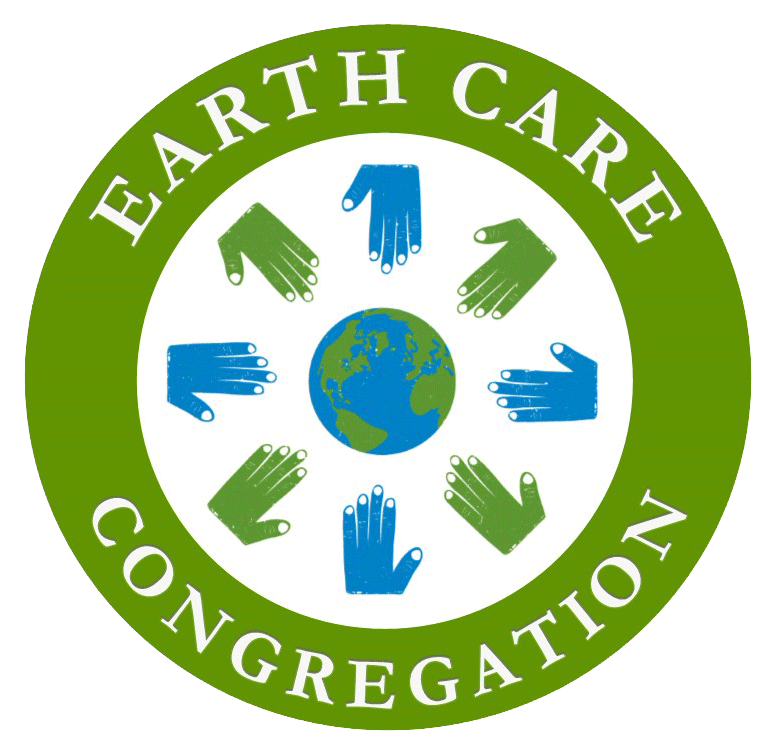5/26/19: Easter 6
Scriptures: Acts of the Apostles 16:9-15 | John 14:25-29
I would like to begin my message this Memorial Day weekend by honoring the legacy of someone who returned safely from war and knew so many who did not.
His parents allowed him to leave high school to enlist for military duty in World War II – and his formal education ended there. And yet Melvin “Red” Allen, a parishioner in my first pastoral call in rural Oklahoma, possessed a perspicacity for our English language far beyond his knowing what perspicacity means. (It means perceptiveness, by the way.)
One day, while we were fording a swollen stream in his pickup truck, I commiserated with Red how difficult it must be to go back and forth over this brook in wet weather.
Red stroked his chin. “Wellll,” he said, “I wouldn’t say it’s difficult to go back and forth across it. I would say it’s difficult to go forth and back.”
“Forth and back?”
“Yep,” he replied. “After all: you can’t go back until you go forth.”
I had never thought of that.
But Jesus may have. Portending both the first Easter and the first Pentecost, Jesus reminds his disciples today, “You heard me say to you, ‘I am going away, and (then) I am coming to you.’”
Not coming, and then going. But going, and then coming.
Jesus was going away – as in, going forth. Then, Jesus would be coming back to his disciples, in ways he had told them they could not yet understand.
Jesus goes forth. And then, his Spirit comes back.
Forth … and then back.
Going … and then coming.
Reorienting the popular phrases back-and-forth and coming-and-going. Reorienting that being church in the twenty-first century – much like church in the first two centuries – might teach us.
The Wikipedia dictionary – known as Wiktionary – defines the popular phrase “coming and going” in this way: “A general bustle of activity of a specified person or group.”
Now, for those of us who were active in church decades ago: think of the multiple programs of the teeming twentieth century church institutional. “A general bustle” it was of women’s circles and children’s choirs and Religion 101. The twentieth century church … that was. It served its purpose. Glory be.
And yet, if we listen closely to today’s scriptures from first century Acts and second century John, we might hear a call to a twenty-first century model of church – a model reversing the inner bustle of church coming and going.
Picking up on last Sunday’s message and story from Acts, these narratives today make clear that this century’s church calling – and our calling into our fourth century as church – might be less about coming to our Temple and then going forth to God’s Tribe entire. It might be more about going forth to God’s Tribe out there, if you will, and coming back with some of it around our Temple home here.
This calling might also be our vision – a vision we have glimpsed already. A vision of church that’s about going into the world first, discovering the good news there, and then inviting it to make its journey and home back here – here, among our campus expanse.
We see that going-and-coming in The Acts of the Apostles story today. And as I noted last week, this biblical book is not titled The Words of the Apostles; it’s called The Acts of the Apostles. For the vision of the author of Acts does not begin with The Word or The Words. It’s where his community goes – what they do – their Love in Action that precipitates the rest.
“During the night,” today’s Acts passage begins, “Paul had a vision.” Watch out: he has a vision. That’s this ancient author’s way of conveying to his audience and to us: Pay very close attention.
“Come over to Macedonia and help us,” his vision shows him. (A map of Paul’s three missionary journeys – copies shared with all in the congregation – is held aloft.) Meaning, cross the Aegean Sea. Meaning, for the first time ever, the gospel leaves the comforts of West Asia for the Gentile badlands of Eastern Europe.
And so they cross over: Paul with two companions, Timothy and Silas. The story then takes on a first-person narration of standing outside the city gate on the sabbath and speaking to women by what they believed a place of prayer, a river.
Pause right there! No Temple mention on this sabbath is made. The three hang out instead outside the city gates: outside the halls of power. Three Jewish men who follow Christ, away from their patriarchal Temple bastion on the holiest of days – where they would always gather first. Finding instead what they believed to be the holy place in the community – beyond the confines of walls. And a river ran through it.
Three Jewish men on the sabbath … speaking to women! No men mentioned here. Only men could worship in the public area of the Temple, but here – instead – they place themselves. One woman steps forward – an unusual woman, most likely not a servant but a free woman: a widow perhaps. And like the unnamed Syrophoenician woman who becomes the first Gentile to breach Jesus’ Jewish wall, Lydia today becomes the first in Europe to enter the first church’s Asian fold.
All because three Jewish Christian men followed the vision of one of them – Paul – to just go. Go across the sea. Go to Europe. Go to the river. In all these cases: Go outside the fold.
And it was only then, after all their goings, that Lydia beckoned them to come. Come and stay at her home. The home being the holy bastion of most first century Church. House churches, we call them today.
Forth – and then back. Goings – and then Comings. Twenty-first century church: meet first century church. Catch the vision, go beyond the known, meet the marginalized stranger … then enter with them the holy place anew.
Easier said than done for our church. This the busiest church I have been a part of: the level of involvement of individuals in their daily lives, that is. How to do any mission activity like this together: when, for example, to hold a Session meeting to approve a baptism like Lydia’s recently, three of the five present were present by Zoom. From the country of Colombia to the state of Delaware: the three who were away from the area were kind enough to join the other two Session members and myself, and they did so by Zoom. Ours is a busy church!
So perhaps our Love in Action: Into the Fourth Century capital campaign vision, then, is less about doing active mission as a church together and more about building active mission partnerships together.
Our mission partnerships. Umbrella Initiatives. Bethesda Cares. Del Ray. DMV Sanctuary Congregations: now renamed the Congregation Action Network.
Maybe where we go in discipleship – our going before the coming – is to establish mission partnerships … and then let those partnerships come among us, alongside of us, and help us lead the way.
The going-and-then-coming model of being church. Our church in many ways is building that model. How many another faith communities do you know that house an entire Twelve Step clubhouse on its property? I have discovered no other in our country! Their seventh anniversary here was celebrated yesterday.
We went to them. They came to us.
And name me another faith community you know that envisions that their manse, or parsonage, or parish house, or rectory will house one or two erstwhile homeless souls – surrounded in support as they will be by our local partnership dedicated to that mission? Funding that mission is twenty percent of our capital campaign. The monies we raise providing a cycle of rent subsidies that will benefit the next persons who are housed among us … and the next … and the next.
The going-and-then-coming model of being church: We go to them. Then they come to us.
We have the physical resources all around us. We do.
Alcoholics, homeless persons, the undocumented, children in the far reaches of Peru and Bolivia. My God: What’s this church coming to?
The correct question is, Where’s this church going to? In order for all to come to be introduced, at least, to what Christ and Christians should be all about?
You can’t go back across the river, Red Allen said to me, until you go forth across it, first. As with Paul and company and the Aegean Sea. As with us all in our going out into the world – to reach a world that may someday make a home among us.
It’s not the twentieth century model of being church. It’s the first. And, perhaps, the twenty-first.
I will not be with you next Sunday because our son Andrew will graduate from college that day. And as with every school I know, his graduation exercise is called a commencement.
A commencement – is a beginning. To go forth. To just plain go.
As Christians, our vision commences with going to the highways and byways. As Christians, our vision commences with seeking out the lost. That they might come home among us, or – like Lydia – we might come home among them.
Or perhaps it’s both!
“I am going away,” Jesus says to his disciples today. “I am going away. And (then) I am coming to you.”
Maybe that’s how we are being called into our fourth century as a church. To go out, first. To the community. To God’s Tribe entire. To reach the needs of alcoholics and undocumented and homeless and children afar.
Maybe that’s how we are being called. Maybe that’s the excitement behind our capital campaign: more than half of the $300,000 we are raising will directly impact our mission partnerships, via program or infrastructure.
Maybe, this Jesus who equates himself with the least: maybe now we can commit – through our campaign – to this Jesus who is coming home to dwell among us.




